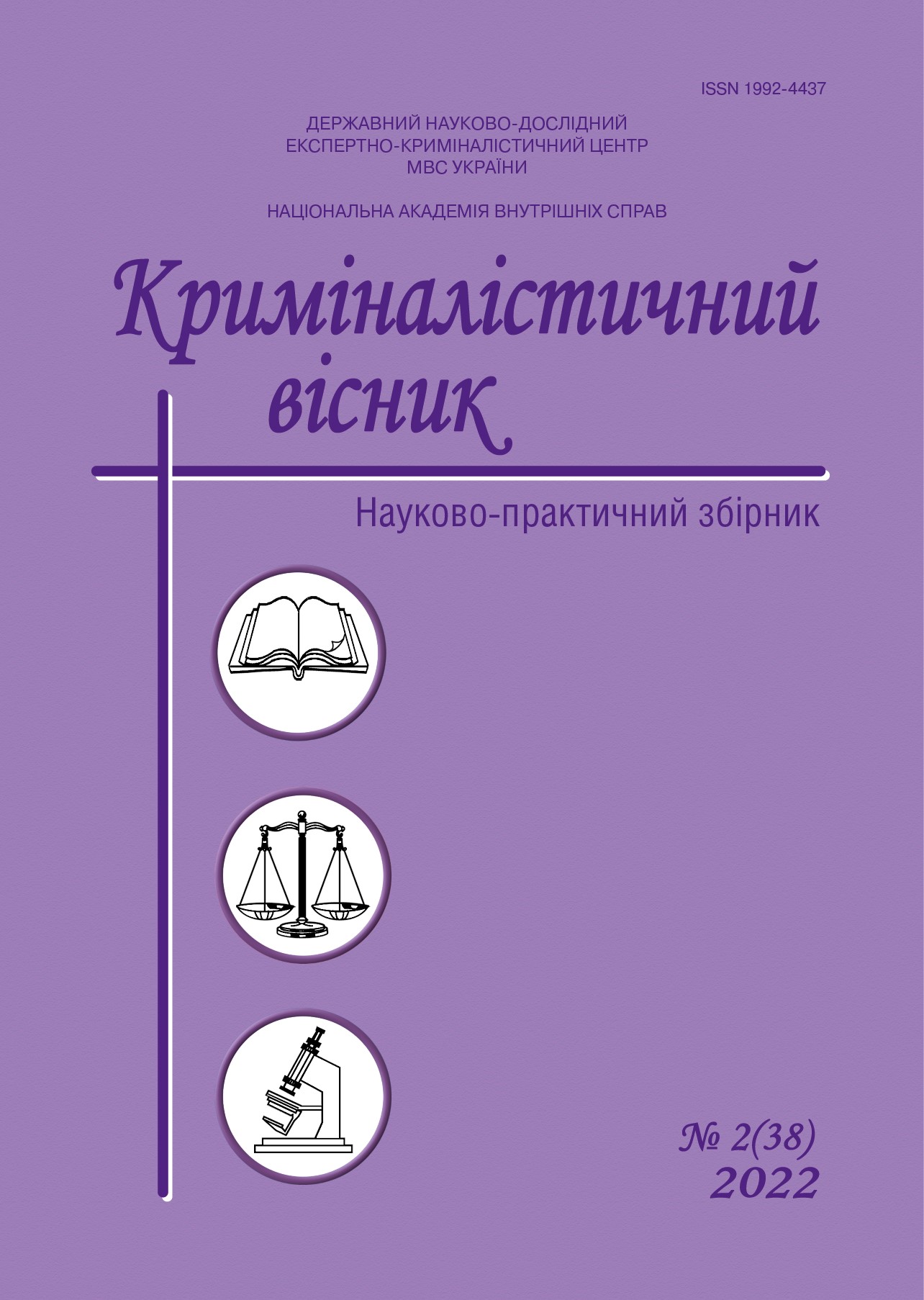ON THE HISTORY OF THE FORMATION OF FINGERPRINTING: «THE CASE OF COUNT RONIKER» (1910 – 1914)
DOI:
https://doi.org/10.37025/1992-4437/2022-38-2-115Keywords:
fingerprinting, identification, fingerprints, papillary lines, dactyloscopic examination, expert dactyloscope M. O. Zhabchynskyi, the case of Count Roniker, Warsaw Police Department, Warsaw District Court, history of criminologyAbstract
The purpose of the article is to scientifically understand the history of the development of dactyloscopy as a
science at the beginning of the 20th century through the lens of «The Affairs of Count Roniker» (1910–1914) (Warsaw). Methodology. The methodological basis of the study is the modern theory of scientific knowledge of social
phenomena, which includes a complex of philosophical (dialectical), general scientific (historical, historiographical,
functional, institutional) and special (historical-legal, comparative, biographical) methods. Scientific novelty. The
historical aspects of the development of dactyloscopy as a science at the beginning of the 20th century are highlighted
on the example of the «Cases of Count Roniker» (1910–1914) and the expert opinion of one of the first dactyloscope
specialists, Mykhailo Oleksandrovich Zhabchinsky (1863 – after 1919). Conclusions. Based on pre-soviet periodicals,
the criminal case of the Polish aristocrat, writer Count Bohdan Roniker (1910–1914), who was accused of murdering
his brother-in-law, a 17-year-old high school student, Stanislav Khrzhanovskyi, with the aim of removing the young
man from the circle of heirs of the Khrzhanovskyi family, is examined in the case of the distribution of property among
the children and the increase in the share that Count Roniker’s wife will receive from this. Among the main grounds
for accusing Count Roniker of murder were the results of a dactyloscopic examination conducted by the head of
the registration bureau of the Warsaw police department, Mykhailo Oleksandrovych Zhabczynski. He conducted an
examination of the grease stains of the men’s hands recovered from the scene, comparing them to Count Roeniker’s
fingerprints. At the same time, the expert came to the categorical conclusion that "the analyzed four tracks... definitely
belong to the thumbs and index fingers of both hands of Count Roniker". On September 5, 1911, the Warsaw District
Court passed a verdict according to which Count Roniker was found guilty of the intentional murder of Stanisław
Khrzhanowski and sentenced to 15 years of hard labor. In May 1912, the case was considered by the Warsaw Court
Chamber. By the verdict of the supervisory authority dated December 29, 1913, Count Roniker was sentenced to 11
years of hard labor. The Government Senate put an end to this case on November 27, 1914, agreeing with the verdict
of the Warsaw Trial Chamber, and thus confirming the status of dactyloscopy as a science.



